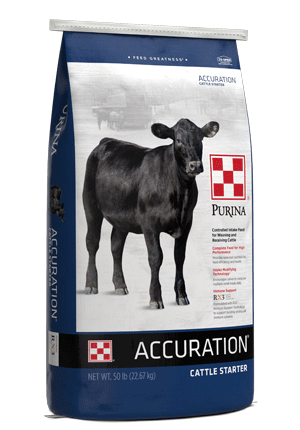
Nutrition and Genetics: Formula for Success at Lazy J Bar Ranch
Management : Cow & Calf
Management : Weaned Calf
Nutrition : Supplements

John and Stephanie Jung pride themselves on staying away from the latest genetic fads and raising Red Angus cattle that perform for their customers.
“We’re firm believers in standing on the middle ground with our cattle,” Stephanie says.
The Jungs believe chasing genetic trends can be risky.
“We don’t chase the newest fads with genetics,” John adds of his family’s Lazy J Bar Ranch near Mina, S.D.
Their primary genetic emphasis is on raising females that will make good cows and creating bulls with the performance their customers demand. Many clients of the Jungs market their calves after weaning, so bull genetics that can put more pounds on at weaning are necessary.
Other traits like moderate birth weight and carcass quality also play a role, which is why Lazy J Bar Ranch has used genomic testing since 2012 to identify the best cattle in their herd.
Still, phenotypic characteristics matter, such as mature cow size.
“Our cows will still be a solid frame score of 5.5 or 6,” Stephanie says. “We’re not afraid of our cows having some size.”
Calves sired by Lazy J Bar Ranch bulls often leave the feedlot for the packing plant at 1,500 pounds, a common average for today’s finished cattle.
“We’ve always tried to stay in the middle and keep frame under these cattle because that’s what the cattle feeders want,” John says.
Passion for cattle
Stephanie started raising Red Angus cattle in 1988, while John transitioned from Simmentals to Red Angus in 1995. They would later join their herds together and marry in 2009 after meeting through the state breed association.
“We both grew up on fourth-generation cattle ranches,” Stephanie shares. “We’re committed to this lifestyle even though it’s not always the easiest.”
During the past 12 years, they’ve grown the Lazy J Bar Ranch to include an annual bull sale in February marketing 40 sires and an online heifer sale in October selling 60 females.
Purina’s role
While the Jungs don’t chase genetic fads, they do use the latest in nutrition and feed technology available from Purina.
John estimates his family has fed Purina mineral for more than 35 years. In 1994, Purina products became a mainstay for the nutrition program when John took a job as a part-time salesman for a local Purina dealer.
“I got my start when a friend we sold Simmental bulls to changed jobs and his sales position opened up,” John says.
Purina’s research is a reason John was first impressed and why he continues to incorporate new feeds and feed technologies as they are developed.
“We’ve used a lot of products because we like to try out the new things with nutrition and see how they work for us,” John says. “For instance, we started feeding our sale heifers Purina® Accuration® Starter in our development program. It gives them a little extra spring of rib, creating great calves that photograph well for the catalog and video auction.”
Six months of grazing, six months of feeding
At the start of June, cows are taken to summer pasture on John’s family ranch 35 miles away, where they rotational graze for approximately six months.
During November, the cows come home to be fed through the winter and prepare for spring calving. If neighbors have crop residues like corn stalks, the cows can graze a little longer. Some silage and hay are fed throughout the winter, with most hay purchased from local farmers. Cows are supplemented with Purina® RangeLand® Cow Liquid Mixer with Rumensin® to help maintain protein levels.[1]
“We plan on grazing half the year and feeding half the year,” John says.
Year-round, cows receive Purina® Wind and Rain® All Season Mineral. Before horn flies start to show up, Altosid® IGR is added to the mineral to help with horn fly control during the grazing season.[2]
Step-by-step weaning
The Jung’s weaning program is an important part of their marketing success for both the purebred calves raised for genetics and the remaining 50 commercial calves that sell through a local sale barn.
Before weaning calves, a creep feeder with Purina® RangeLand® Calf Creep pellet is taken out to the pasture to introduce calves to supplemental feed. In late summer, the creep feeder is transitioned to Accuration® Creep and by the time calves are ready to come home for weaning in October, they know how to eat.
All calves are weaned at once in an open lot where they receive Purina® Precon® Complete at the onset of weaning. They are later transitioned to a mixed grain ration.
“On day one, you put it in the bunk, and they’ll nibble around on it. Day two, they’re starting to eat better. Day three, they’re standing at the gate waiting for the feed wagon to come in. They don’t miss a beat,” John says.
The Jungs have been pleased with the addition of RX3® Immune Support Technology to Precon® Complete.
Additionally, feed conversion has been good with the average daily gains during the 45-day weaning period ranging from 3.5 to 4 pounds.
“I am a firm believer in Precon® Complete. I would say that is probably one of the best products Purina has developed,” John adds.
Find out what the Purina All Seasons™ Cattle Nutrition Program could do for your operation with a Proof Pays trial. Visit proofpays.com to sign up.


